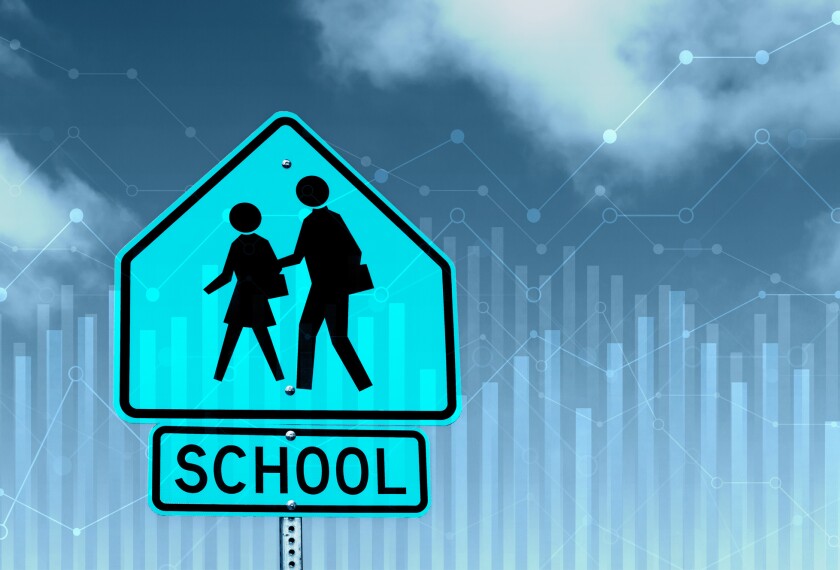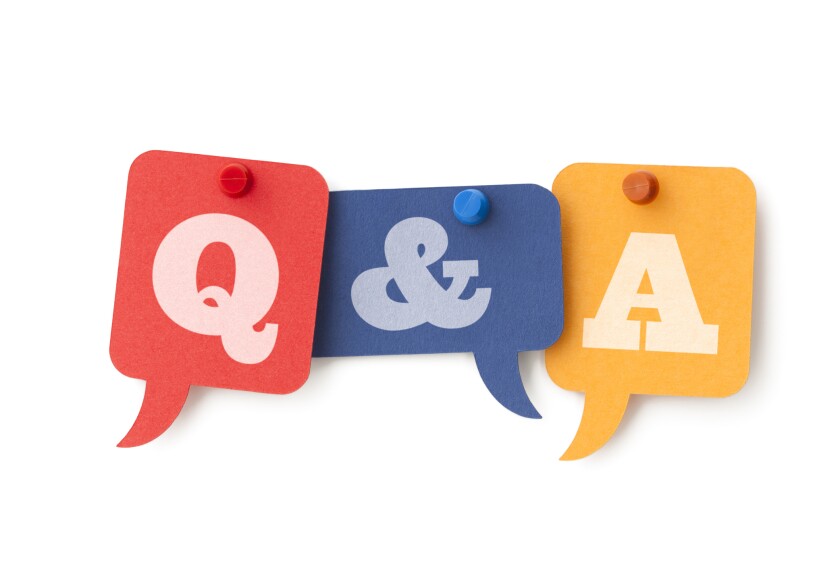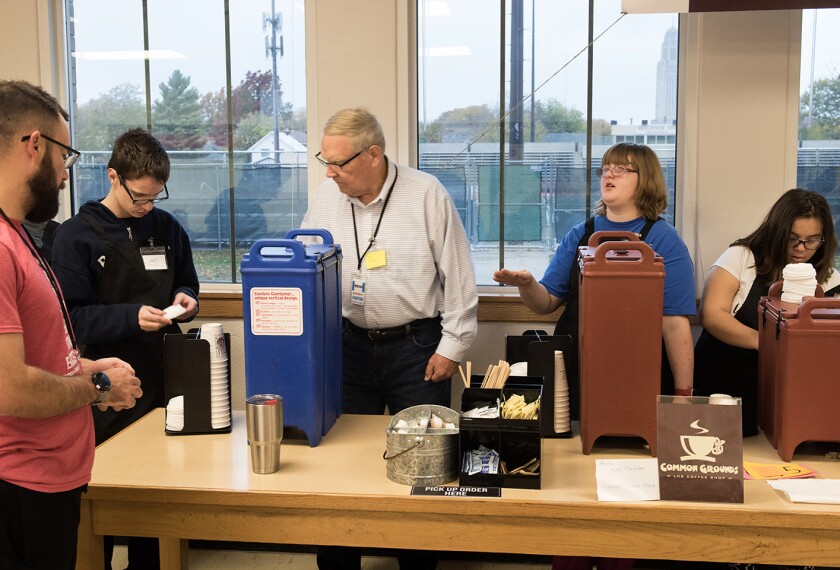Emotions were already running high this election season when the attempted assassination of former President Donald Trump pushed them to new levels, flooding social media with disinformation and crass jokes that landed some educators in hot water.
The moment serves as a reminder that as the presidential election campaigns switch into high gear and schools come back into session, it’s an important time to teach students the skills needed to be responsible digital citizens.
But teaching students these skills—how to restrain themselves on social media when emotions are running high and consequences can be severe—becomes even more challenging when the adults around them fail to show any restraint, said Merve Lapus, the vice president of education outreach and engagement at Common Sense, a nonprofit research and advocacy organization that provides curricula on media literacy.
“This value that many people seem to find out of getting a rise out of people, test how much they can take, we have normalized it so much,” he added. “Now with our kids seeing it, they feel like, ‘oh, that’s just how we operate,’ and not only online.”
As the news broke of the attempted assassination, many people—including in the K-12 education world—took to social media to share their opinions, letting their ugliest impulses spill into the public sphere. Sharing or creating content that promotes violence or conspiracy theories has consequences, media literacy experts emphasize.
A middle school behavior facilitator in South Dakota lost her job after posting on Facebook about wishing the shooter “had his scope sighted in correctly,” according to local media. A teacher in Colorado is facing intense backlash over a similar post appearing to express disappointment that the shooter missed his target. An Oklahoma teacher posted on social media that she wished the attempted assassin “had a better scope,” prompting state superintendent Ryan Walters to threaten to revoke the teaching certificate of the teacher.
Walters had his own reaction on X following the attempted assassination, posting: “The left, the liberal media, and the radical extremists of Joe Biden’s party tried to assassinate @realDonaldTrump.”
Education Week reached out for comment from Walters but has not received a response yet.
Media literacy experts say everyone needs to dial down the angry rhetoric on social media.
“As adults, what we post and say has real impact to our friends and family and community,” said Lapus, and it’s important to understand that “you represent more than a personal opinion when you’re an educator, a thought leader, a person in your community, who is really driving thought and learning for those kids.”
As schools enter the fall semester that coincides with the final stretch of a highly charged and contentious election, here are five tips for students—and educators—to be more positive and productive participants in the digital public square (and to avoid saying something they’ll later regret).
1. Understand how social media algorithms work
It’s important, said Lapus, that teachers understand—and impart to their students—that social media platforms are working against your better instincts. Their algorithms are designed to play on users’ emotions and get them to share first and think second. Emotion keeps users online and sharing content, and engaged users are what’s needed to sell ads and make money, he said.
“We know that the algorithms are built on the most emotional and divisive [content] gaining traction, because that’s ad sales right there,” he said. That is the case, he added, even if the information is inaccurate or fake “but it riles you up so much that you feel like you need to have a voice here.”
2. Pause before posting or sharing thoughts or information
Don’t underestimate the power of the pause, say experts in social-emotional learning and digital literacy. Get into the habit of not posting or reacting to something on social media right away and you’ll likely find there’s a lot you choose not to post.
During that pause, take a moment to analyze your emotions and the motivations of the creator of the content and game out the potential long-term consequences of your response, said Lapus.
Students don’t always transfer the social-emotional learning they’re getting in the classroom—such as self-awareness, responsible decisionmaking, and emotional management—into their lives online and outside school on their own. That is why educators need to be explicit about connecting the SEL skills students are developing in school with their online behavior.
3. Put yourself in the other person’s shoes
The fancy SEL term for this is perspective-taking. It’s a valuable exercise for understanding where someone is coming from—or, at the very least, realizing that there’s a lot you don’t know about what’s going through their minds.
People tend to be kinder in face-to-face interactions, and the goal is to humanize people online because online environments make it easier to forget that it’s a person on the other side of a post or username.
Increasingly, though, Lapus noticed a reversal of that trend: that mean-spirited culture of the internet is changing in-person interactions for the worse. It underscores the real-life consequences of online behavior, he said.
That’s something that students may understand more than adults. In a 2023 survey from the Center for Countering Digital Hate, teens—83 percent of them—were more likely than adults—63 percent—to say that online harms can have serious real-world impacts.
4. Take a break from social media
Taking a break from social media—or all media for that matter—can help give people a mental health boost and provide valuable perspective about how social media makes them feel. It’s a good time to ask what they actually want from social media and whether they’re accomplishing that with their current social media use.
Breaks might have other benefits, too. The Center for Countering Digital Hate survey found that teens who spent more time on social media were more likely to say they believe common conspiracy theories.
The adults in kids’ lives should take social media breaks, too, said Lapus. If social media and news saturation are stressing out the adults in their lives, students will pick up on the emotions of their teachers and parents. In that way, the tenor of conversations on social media can affect kids even too young to be on it, he said. Young kids may be aware that something bad has happened, or saw disturbing images of Trump’s bloody face on TV, said Lapus, and they need the adults in their lives to be attuned to them.
“It’s important to reinforce the feeling of safety. Important for the younger ones, probably everyone, [that adults] take a screen break,” he said. “We all need that time to take a break. It’s not just a pause on keystrokes, but a pause from the media itself. Re-engage with what’s important in front of you.”
5. Adults need to model good digital citizenship
Children learn from watching adults and mimicking their behavior, and the same is true on social media.
Adults, educators in particular, must remember that they are setting examples for how students should act online, said Lapus. Modeling good social media behavior is one of the most powerful tools educators have at their disposal to keep students from posting things that could come back to hurt them in the future.
“We ourselves, we can’t just tell our kids to pause and think and think critically about how they use media and tech and think about the ethical and social impacts—we need to be practitioners just as much,” said Lapus. “But it is so easy for us all to fall into the traps of the algorithms and the platforms.”
It’s best to be an example of good behavior for kids than a cautionary tale for getting fired for inappropriate or offensive comments made on social media.
Disclaimer: The copyright of this article belongs to the original author. Reposting this article is solely for the purpose of information dissemination and does not constitute any investment advice. If there is any infringement, please contact us immediately. We will make corrections or deletions as necessary. Thank you.







